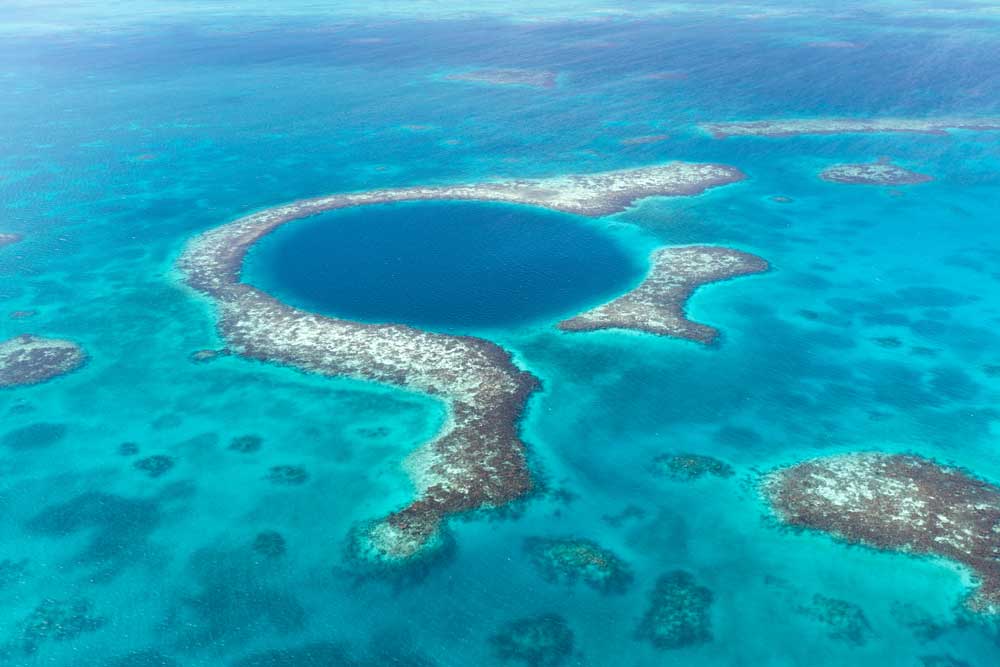
Discover Belize Liveaboard Diving - “Under the Shade I flourish.”
The cornerstone of diving in Belize has to be the Great Blue Hole. This underwater sinkhole is one of the most famous dive sites globally, and it offers a unique opportunity to explore ancient cave formations amidst deep blue waters.
Alongside the Blue Hole, you'll find other phenomenal dive sites like Half Moon Caye, known for its stunning wall dives, and Turneffe Atoll, which boasts over 70 different dive sites brimming with marine life.
About Belize Liveaboard Diving
The Magnificence of Belize Barrier Reef, the second largest reef system in the world.
When To Go To Belize?
The best diving conditions in Belize are found from November to April, during the dry season. Yet, even the wet season has its advantages, including fewer crowds and discounted liveaboard packages.
The whale shark season is typically during April to June.
Despite the rain, during the rainy season water temperatures are at their highest reaching 28 - 29 Celsius (82F - 84F).
Tips For Travellers
There is only one decompression chamber for Belize liveaboards located in San Pedro. It is mandatory for all divers to have diving insurance.
Check the minimum diving experience as some dive sites require advanced certification or a specific number of logged dives to be able to enjoy.
During the rainy season there may be a risk of Malaria or Dengue fever. Precautions are recommended.
Bring appropriate diving gear. Feel free to ask for equipment rental from your chosen liveaboard in Belize.
How to get there & Ports of Departure?
Journeying to Belize is straightforward. Most people fly into Philip S. W. Goldson International Airport (PGIA) in Belize City. From there, it's a quick trip to the marinas of Belize City or Ambergris Caye, where most liveaboards set sail.
Flights from various global locations frequently head to Belize, commonly with a layover in Miami, Florida.
If you're a citizen or permanent resident of Belize, you'll need to pay a departure tax of $35 in Belizean currency, along with a security screening fee of US $0.75. For those who are neither citizens nor permanent residents of Belize, the departure tax is $55.50 in U.S. dollars, in addition to the US $0.75 security screening fee.
Essential Travel Tips for Liveaboard Adventures
- Marine Park Fees: Be aware of per person, per day marine park fees. Some liveaboard packages include these fees, while others require onboard payment. Payment options include Visa, Mastercard, cash, or travelers checks.
- Passport Validity: Ensure your passport is valid for at least 6 months after your planned entry date. Most countries require this, along with a return ticket. Check visa requirements in advance at www.mfa.gov.eg.
- Health Preparations: Consult your doctor 8 weeks prior to your trip for vaccinations or preventive measures recommended for your destination.
Note: Please review the specific terms and conditions of your chosen liveaboard for any additional marine park fees or travel requirements.
We're Here to Help 24/7






